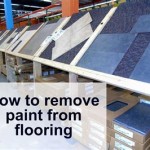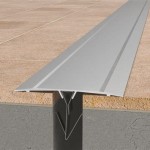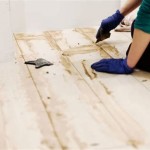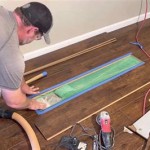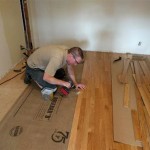Can You Put Vinyl Plank Flooring Over Asbestos Tile? A Comprehensive Guide
The question of whether vinyl plank flooring can be installed over existing asbestos-containing floor tiles is a complex one, fraught with considerations for safety, regulations, and the long-term performance of the new flooring. This article provides a detailed examination of the factors involved, including the potential risks, acceptable methods, and necessary precautions.
Asbestos, a naturally occurring mineral fiber, was widely used in construction materials, including flooring, due to its strength, fire resistance, and insulating properties. However, the inhalation of airborne asbestos fibers is a known cause of serious health problems, including asbestosis, lung cancer, and mesothelioma. Consequently, materials containing asbestos are now heavily regulated.
Many older homes and buildings, particularly those constructed before the 1980s, may contain asbestos floor tiles. These tiles typically come in 9x9 inch or 12x12 inch sizes and are often found in basements, kitchens, and bathrooms. Before undertaking any flooring project in an older building, it's crucial to determine whether asbestos is present.
Identifying Asbestos-Containing Floor Tiles
Visually identifying asbestos floor tiles is not a reliable method. While the size and age of the tiles can offer clues, the only definitive way to confirm the presence of asbestos is through laboratory testing. A sample of the tile must be collected and sent to a qualified laboratory for analysis. Sampling should be performed by a trained professional to minimize the risk of fiber release.
Homeowners should avoid attempting to remove or disturb the suspected asbestos-containing material unless they are trained and equipped to do so. Improper handling can release asbestos fibers into the air, posing a health risk to themselves and others. Instead, consider contacting a certified asbestos abatement contractor to handle the testing and potential removal process.
Even if you choose to cover the existing tiles, knowing whether they contain asbestos is essential for future renovations or demolition work. This knowledge will inform appropriate safety measures and disposal procedures.
Encapsulation as a Preferred Method
In many cases, encapsulation, or covering the existing asbestos-containing tiles, is a preferred alternative to removal. Removal can be costly, disruptive, and potentially hazardous if not performed correctly. Encapsulation, on the other hand, involves sealing the asbestos-containing material to prevent the release of fibers. Installing vinyl plank flooring over asbestos tiles is a form of encapsulation.
However, successful encapsulation relies on several key factors. The existing tiles must be in good condition, meaning they should be securely bonded to the subfloor, relatively intact, and free of significant damage or crumbling. If the tiles are loose, broken, or deteriorated, they need to be addressed before installing the new flooring. Attempts to simply cover damaged asbestos-containing material can exacerbate the problem and lead to fiber release.
Before installing vinyl plank flooring, the existing asbestos tiles should be thoroughly cleaned and leveled. Any loose debris should be removed, and any cracks or gaps should be filled with a suitable patching compound. This creates a smooth, stable surface for the new flooring and minimizes the risk of future problems.
It is important to note that while encapsulation can be a viable solution, it does not eliminate the asbestos hazard. The material remains in place, and any future disturbance could release fibers. Therefore, it is crucial to inform future homeowners or contractors about the presence of asbestos flooring beneath the vinyl plank.
Preparing the Subfloor and Installing Vinyl Plank Flooring
Proper subfloor preparation is critical for a successful vinyl plank flooring installation, regardless of whether asbestos is present. The subfloor must be structurally sound, level, and free of moisture. Any imperfections in the subfloor can telegraph through the vinyl plank flooring, leading to uneven surfaces, premature wear, and potential damage.
When installing over asbestos tiles, a solid underlayment is strongly recommended. This underlayment provides an additional layer of protection against fiber release and helps to create a smoother, more comfortable walking surface. It also helps to distribute weight evenly, reducing the risk of cracking or damaging the underlying asbestos tiles.
Different types of vinyl plank flooring exist, including click-lock and glue-down options. Click-lock vinyl plank flooring is generally preferred for installations over asbestos tiles because it does not require adhesives that could potentially disturb the underlying material. Glue-down vinyl plank flooring, on the other hand, involves applying adhesive directly to the asbestos tiles, which could increase the risk of fiber release during installation or future removal.
When installing click-lock vinyl plank flooring, it is essential to follow the manufacturer's instructions carefully. Proper alignment and locking of the planks are crucial for creating a secure and durable floor. Avoid using excessive force that could damage the planks or the underlying asbestos tiles.
After the vinyl plank flooring is installed, regular maintenance is essential to preserve its appearance and longevity. Sweep or vacuum regularly to remove dirt and debris, and clean spills promptly with a damp cloth. Avoid using harsh chemicals or abrasive cleaners that could damage the flooring or the protective layer.
Regulations and Legal Considerations
Regulations regarding asbestos vary depending on location. It is important to research and comply with all applicable federal, state, and local regulations before undertaking any flooring project that involves asbestos-containing materials. Some jurisdictions may require permits for encapsulation or removal, while others may have specific disposal requirements.
Failure to comply with asbestos regulations can result in significant fines and legal penalties. It is also important to disclose the presence of asbestos to potential buyers when selling a property. Failure to disclose can lead to legal action and financial liability.
Homeowners should also be aware of their potential liability if they hire contractors who improperly handle asbestos-containing materials. It is crucial to select contractors who are licensed, insured, and experienced in asbestos abatement or encapsulation. Ask for references and check their credentials before hiring them for any work.
In some cases, homeowners may be eligible for financial assistance to help cover the cost of asbestos abatement or encapsulation. Government agencies and non-profit organizations may offer grants or loans to assist homeowners with these projects. Researching available resources can help make the process more affordable.
Proper documentation is also essential when dealing with asbestos-containing materials. Keep records of all testing, abatement, and encapsulation work performed, including the names of the contractors, the dates of the work, and the results of any air monitoring. These records can be valuable for future reference and can help to demonstrate compliance with regulations.
In conclusion, installing vinyl plank flooring over asbestos tiles is a complex decision that requires careful consideration of the potential risks, regulations, and legal implications. While encapsulation can be a viable option, it is not a substitute for proper asbestos abatement when necessary. Homeowners should consult with qualified professionals and comply with all applicable regulations to ensure a safe and successful flooring project.

Can I Put A New Floor Over Asbestos Tiles Branch Environmental

Flooring That Can Be Installed Over Asbestos Tile

How To Seal Asbestos Tiles Ehow

How To Encapsulate Vinyl Tile With Concrete Topping Part 1 3

Should You Install Vinyl Floor Over Tile

Can I Cover Asbestos Floor Tiles With Concrete

Installing Hardwood Over Asbestos Tiles Homeadvisor

Marmoleum Over Possibly Asbestos Containing Vinyl Tile

The Truth About Asbestos In Vinyl Flooring

Can You Put Laminate Or Vinyl Plank Flooring Over Tile
See Also
